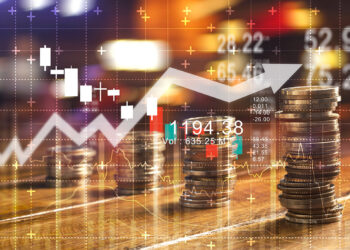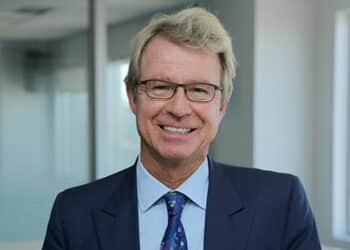The CIO believes the modern gold rush is not a bubble, as some suggest, but warns that the current wave of unregulated retail herding is concerning.
“Everything gets called a bubble these days. Last month it was AI. This month it’s gold,” Tuckwell said.
“There’s strong evidence now of direct mum and dad investors participating in this by just buying coins and bars. This direct gold sales space is essentially unregulated and it does give you a lot more room to aggressively sell [gold] and market it.”
He likened the situation to past financial crises, including the dotcom bubble and the subprime mortgage meltdown.
“That unregulated sales directly to retail investors has been one of the primary drivers of financial bubbles this century,” Tuckwell told InvestorDaily.
The price of gold has surged 150 per cent in the past three years, most recently hitting a new record high above US$4,300. In light of this rally, HSBC on 17 October raised its gold price forecast, now predicting the precious metal will reach US$5,000 in 2026.
“Gold is a defensive asset that you put in your portfolio as a diversifier. It’s not really the type of thing that you associate with these really sharp, sudden upswings in price – the type that you might expect on a rocketing tech stock or bitcoin,” Tuckwell said.
Earlier this year, JP Morgan’s head of base and precious metals research, Greg Shearer, noted that a potential shift of just 0.5 per cent of foreign-held US assets into gold could drive prices to US$6,000 – and Tuckwell agreed, describing the relationship between US treasuries and gold “like the sun and the earth”.
“The sun (Treasuries) is much larger than the earth (gold). The earth orbits the sun. And tiny changes in the sun – like solar flares, let’s say – can cause massive changes on earth.
“A rotation of this kind has been occurring this year. If it continues this quarter, gold will punch above US$5,000/oz with ease,” Tuckwell said.
Global X ETFs investment analyst Justin Lin confirmed the trend is evident in the firm’s data, though he noted the broader implications are more nuanced.
“This year to date, investors have pulled roughly AU~$100 million from our US Treasury Bonds ETF and plowed more than AU$620 million into our suite of physical gold ETFs. However, it’s worth noting that correlation and causation are often split,” Lin said.
“In our opinion, the exits from US Treasury bonds are more likely tied to rotation into higher yielding assets (such as Australian bonds) given the resumption of the Federal Reserve’s rate-cutting cycle as financial advisers seek to maintain yield targets.”
There is also a political element at play as, asked where gold’s top might be, Tuckwell said it will depend on the next move by US President Donald Trump.
“The reason people, especially the Chinese, are looking to ditch US Treasuries and go into gold is as a form of political protest essentially. You didn’t see this under Barack Obama at all,” he said.
“The question of where the gold price is going to go and what Donald Trump’s going to do next, are the same question. If Trump does keep driving more volatility and unpredictability in the global trade system, I could easily see a scenario where the gold price shoots above US$6,000 easily,” Tuckwell said.
He also warned that if geopolitical tensions ease, the gold price could fall by 20–30 per cent from current levels.
“Given the character of gold as an asset – a safe, conservative haven – I think the strength and the speed of this rally has really taken people by surprise and given how out of character it is as well, I think that’s got a lot of people thinking it’s a bit worrying.
“If you’re just running in now because you see the price going up and you think that it’s going to keep going up further – that’s not a sensible way to invest,” he said.
Tuckwell believes central banks are unlikely to increase their gold holdings at current prices.
“I think there is a possibility that if prices continue to rise like this, they’re not going to add stock and they may even be inclined to sell it.
“I don’t see a situation where they’re going to keep topping up,” he said.
Lin agreed that retail investor FOMO is playing a role in the recent surge, but maintains that deeper, structural drivers are at play.
“Falling US Interest rates, renewed US–China trade tensions, Russia testing NATO boundaries in Europe, and potentially the longest US government shutdown ever, are individually, already strong catalysts for gold accumulation, but together, they create an unrivalled bull case for gold,” he told InvestorDaily.
“I think broadly, there is a sense that the world, both economically and geopolitically, is entering an era of volatility and that it’s likely to get worse before it gets better. That sense of unease and pessimism is being channelled into ‘hard assets’ like gold, silver and other precious metals, which are trusted stores of value proven through history.”
According to Global X ETFs, gold is undergoing a fundamental repricing as it becomes a cornerstone of the increasingly fragmented global financial system – and retail investors appear to be catching on.
“Prior to this year, most investor portfolios have held little to no gold at all. If what we’re observing is simply a shift in perspective around gold from ‘alternative asset’ to ‘portfolio staple’, then that increase from near zero to say, 3–5 per cent allocation, across a massive retail cohort will naturally appear to be ‘bubbly’, but is in reality, entirely rational,” Lin said.
Meanwhile, bitcoin – often referred to as “digital gold” – is also seeing a surge in value, Lin noted.
“Bitcoin is one I’d highlight as it’s also hit numerous all-time highs this year. However, bitcoin is still a very young asset and has yet to shake off its correlation to equity markets, so it is not enjoying the same momentum as gold,” he said.
However, Tuckwell said he sees little overlap between bitcoin and gold and dismissed the idea of a rotation from one to the other.
“There has been a lot of propaganda from the bitcoin lobby saying that bitcoin is the new gold – to my mind, that’s just straight ahead propaganda.
“Bitcoin’s much more like your hot sauce, your speculative tech stocks that can make you very rich very quickly. Its appeal is to much more of a younger crowd and to more self-directed retail investors,” Tuckwell said.
“Gold, by contrast, is in your portfolio as balanced, it’s in there as a diversifier. Its main audience and constituency is those central banks and those conservative institutional investors. What happens in bitcoin land doesn’t translate into gold land at all – although I have seen a lot of advertising coming out of bitcoin types suggesting that it does.”
According to Morningstar, gold-tracking ETFs attracted around AU$520 million in net inflows during Q3, pushing total one-year net flows to over AU$1.2 billion for the year ending September 2025 – up from AU$357 million the year before.
Backed by sustained investor demand and a strong rally in gold prices, total assets in Australia-domiciled gold ETFs have more than doubled over the past 15 months, reaching AU$9.6 billion as of 30 September 2025.
Morningstar analyst Zunjar Sanzgiri added: “Global inflation and an accommodative monetary regime have led to dipping real interest rates, making gold a popular shield against shrinking purchasing power. Combined with a weakening US dollar and mounting geopolitical unrest arising from transnational military engagements and trade conflicts, gold’s role as a financial anchor in turbulent markets is reinforced.”






